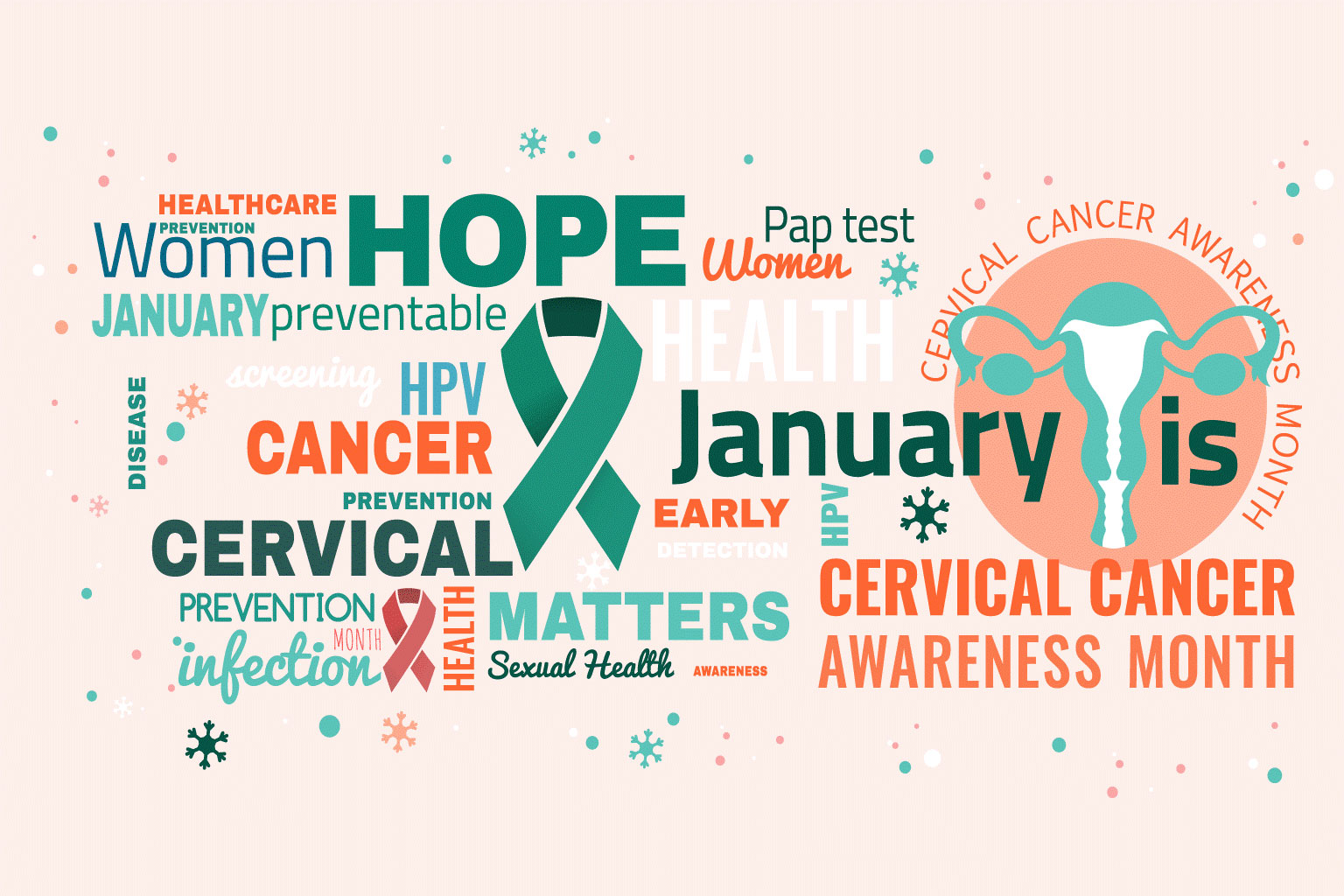
Cervical cancer is the fourth most common form of cancer among women, yet it is one of the most preventable types. Every year, nearly 13,000 women are diagnosed with cervical cancer in the United States. Fortunately, those numbers are declining by around 2% each year, most likely due to proactive testing and vaccination. As a way to raise awareness, the U.S. Congress declares January as Cervical Health Awareness Month. (CDC, 2021)
How Does Cervical Cancer Develop, and Who Is at Risk?
The cervix is the lower, narrow end of the uterus that connects the birth canal (vagina) to the uterus’s upper half. According to the Centers for Disease Control and Prevention (CDC), cervical cancer develops when cells in the cervix grow out of control, multiplying uncontrollably and forming tumors. It is usually possible to detect and treat cervical cancer before it becomes a severe problem because it spreads slowly.
Women under the age of 50 are most likely to develop cervical cancer, and younger women tend to have it less frequently.
Signs and Symptoms of Cervical Cancer
Women with early cervical cancers and pre-cancers usually have no symptoms until cancer becomes more significant and grows into nearby tissue. When this happens, the most common symptoms include:
- Abnormal vaginal bleeding, such as bleeding after vaginal sex, bleeding after menopause, bleeding and spotting between periods, or having more extended than typical.
- A strange vaginal discharge that may contain blood and occurs between periods or after menopause.
- Pain in the pelvic region or during sex.
The advanced disease can include the below signs and symptoms
- Swelling of the legs
- Problems urinating or having a bowel movement or bleeding during it.
Major Risk Factors for Cervical Cancer
Human papillomavirus or HPV is the most considerable risk for cervical cancer. Other factors that can also increase your risk include Human Immunodeficiency Virus (HIV), smoking, obesity, family history of cervical cancer, poor diet, intake of birth control pills, and at times three or more full-term pregnancies or pregnant before the age of 17 years. Women who don’t get screened for cervical cancer with Pap and HPV tests as advised have a higher risk of cervical cancer.
Diagnose Procedure and Stages
Pelvic exams and Pap smears usually can detect most cases of cervical cancer. Although for an accurate diagnosis, the doctors visually examine the cervix and consider a tissue sample for biopsy.
Once the biopsy confirms cancer, further tests will check whether the disease has spread (metastasized). A staging test includes liver and kidney function tests, blood and urine tests, and X-rays of the bladder, rectum, bowels, and abdominal cavity. (Mayo Clinic, 2021)
- Stage I: Only the cervix is affected by cancer.
- Stage II: Cancer has spread beyond the cervix but has not yet reached the pelvic wall.
- Stage III: Cancer has spread to the lower third of the vagina and may have spread to the pelvic wall and nearby lymph nodes.
- Stage IV: Cancer has spread to the bladder, rectum, or other parts of the body.
Types of Treatment
Cervical cancer is treated in several ways. It depends on the kind of cervical cancer and how far it has spread. Treatments include surgery, chemotherapy, and radiation therapy. (Cancer, 2021)
- Surgery: Doctors remove cancer tissue in operation.
- Chemotherapy: Using particular medicines to shrink or kill cancer. The drugs can be pills you take or medications given in your veins, or sometimes both.
- Radiation: Using high-energy rays (similar to X-rays) to kill cancer.
What Can You Do to Reduce The Risk of Cervical Cancer
Ask your doctor about the HPV vaccine and have a routine Pap test.
Preventing HPV infection with a vaccine may lower your risk of cervical cancer and other HPV-related malignancies. Consult your doctor to see if an HPV vaccine is suitable for you or consider Pap tests. Pap tests can detect precancerous conditions of the cervix, so they can get monitored and treated to prevent cervical cancer. According to most medical organizations, Pap tests should be started at age 21 and repeated every few years.
Practice safe sex and avoid smoking.
Make sure you prevent sexually transmitted diseases by using a condom every time you have sex and limiting the number of sexual partners you have. If you don’t smoke, don’t start. If you do smoke, talk to your doctor about strategies to help you quit.
Vaccinations and regular screening tests are two of the most important things you can do to prevent cervical cancer.
Work Cited
“Cervical Cancer – Symptoms and Signs.” Cancer.Net, 26 Feb. 2021, www.cancer.net/cancer-types/cervical-cancer/symptoms-and-signs
“Cervical Cancer.” Mayo Clinic, Mayo Foundation for Medical Education and Research, 17 June 2021, www.mayoclinic.org/diseases-conditions/cervical-cancer/symptoms-causes/syc-20352501
“Std Facts – Human Papillomavirus (HPV).” Centers for Disease Control and Prevention, Centers for Disease Control and Prevention, 19 Jan. 2021, www.cdc.gov/std/hpv/stdfact-hpv.htm
